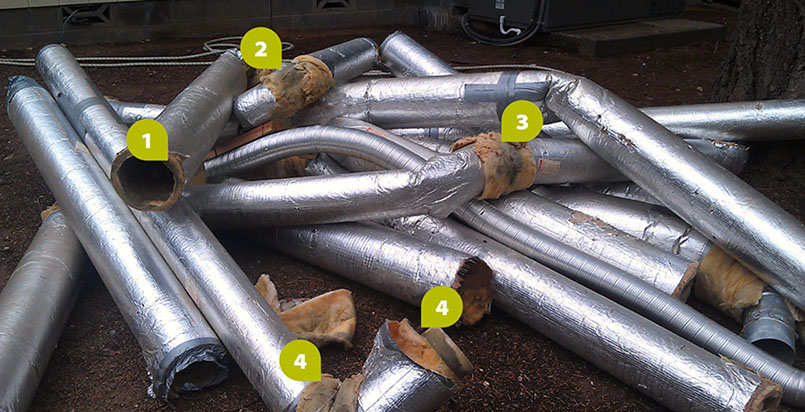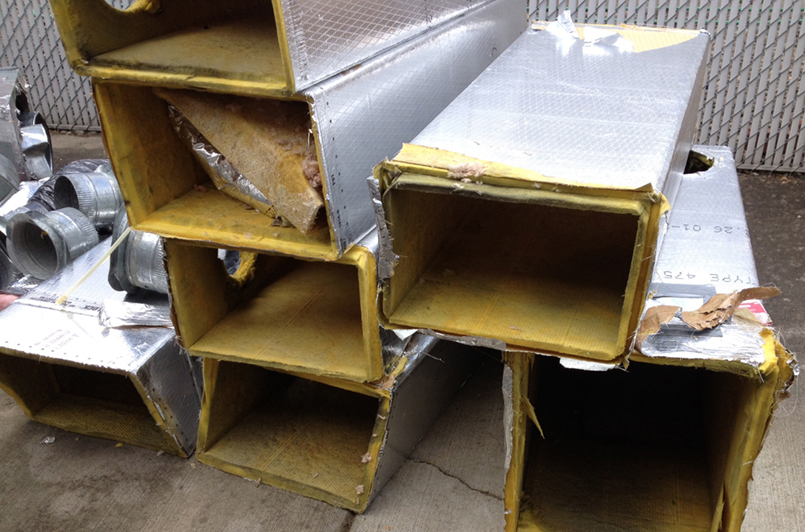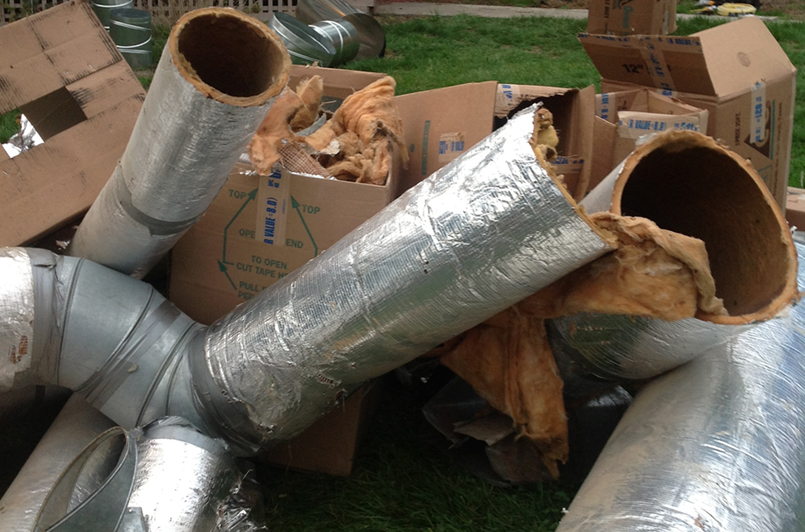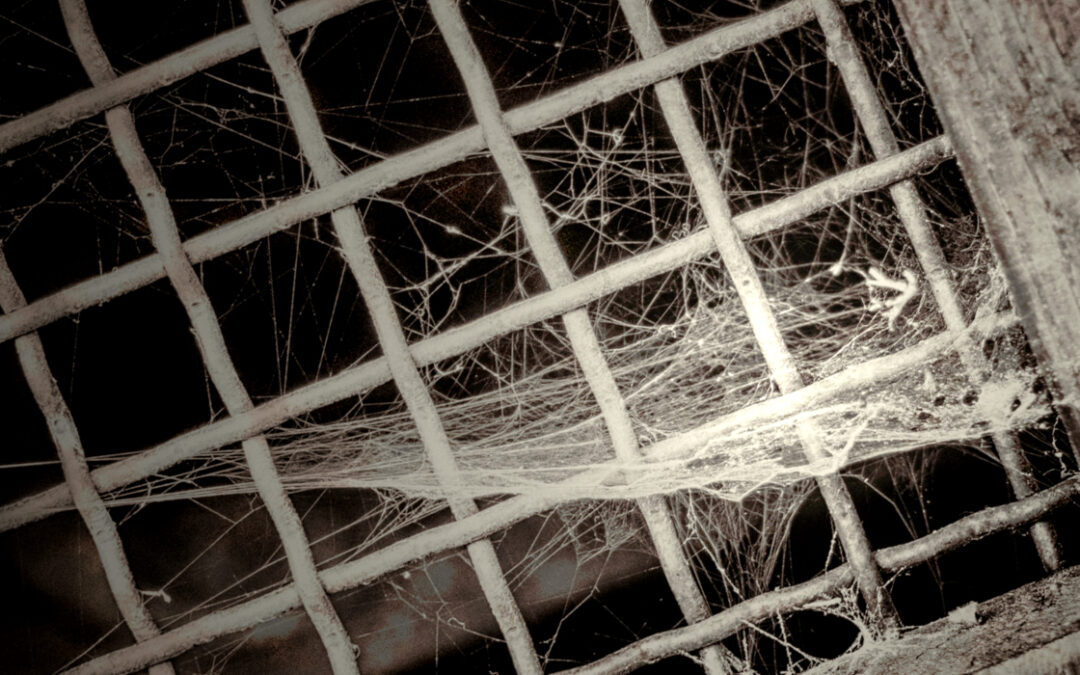It can be scary to imagine what one might find looking into the crawl space of their home. This is an area that most of us would probably rather not think about. At best, it is likely to be a very dirty place with a lot of moisture and spider webs. At worst, parts of the house could be falling apart, or there could be any number of critters—dead or alive—underneath there. It’s no wonder most of us will never venture into that space willingly.
Some of our customers have recently discovered a potential threat lurking in their crawl space that they did not expect to find. It’s called fibrous ductwork. It is constructed of long stranded fiberglass and held together by resin.

- All connections were made with duct tape, which typically only lasts about five years.
- Poor connections will cause significant energy loss through duct leakage.
- Air leakage: Several coupled joints show ghosting.
- Evidence of water damage means that this fibrous ductwork acted like a sponge and accumulated airborne health hazards that were pushed into the home by forced air.
This is fibrous ductwork—often mistaken as metal ductwork by homeowners. This is a large contributor to high energy bills and the number one cause of sudden upper respiratory irritation. Typically, once a homeowner is educated about the construction of this type of ducting they immediately want it gone.
Effects on Energy Efficiency
For years, this type of ductwork has been known as a highly inefficient way to move air through a home. Fibrous ducting could be likened to passing air through a sponge—it is porous and does not hold air pressure very well. It also cannot be sealed in any way. The result for homeowners is higher energy bills.
While most of us might first think to replace the heating and cooling equipment to achieve lower energy bills in a home, there are times when it makes more financial sense to replace the ductwork—particularly when the home has fibrous ductwork. Sometimes, changing out the ductwork can even help extend the life of the existing heating and cooling equipment. This gives homeowners more time, and makes a complete system change-out more affordable when needed.
Effects on Respiratory Health
Again, fibrous ductwork is constructed of long stranded fiberglass and held together by resin. Typically, after about 15 years, that resin will begin to break down and oxidize—and the fibers will release. A typical symptom that a homeowner might notice when this happens is more-than-normal amounts of dust accumulating throughout the house.
Along with this, some people might also experience health problems such as upper respiratory irritation—or symptoms similar to allergies. This type of ductwork is also a hazard for anyone with asthma. In some extreme cases, it has even been the cause of people being hospitalized.
The sponge-like qualities of the fibrous ducting cause it to behave like a petri dish—collecting moisture and other debris, and negatively affecting the air quality of the home. It is also a product that cannot be repaired or cleaned. The only real solution is to have the fibrous ductwork replaced with new sealed ductwork.
We have observed that when this change is made in a home, any negative health symptoms that were being experienced by the homeowner either go away completely, or significantly. We think it’s a good idea for homeowners to be aware of the type of ductwork in their crawl space—both for the sake of their energy bills and their health.

This type of fibrous ductwork is commonly seen even on newer track homes. It is a cheap option for some contractors. Not all HVAC contractors have the ability to make their own metal plenums, nor do they have a facility capable of doing so.

Poor duct tape connections and scored foil scrim is visible on all the pieces shown. The outer layer of this ductwork makes it appear as though it is metal, which is a common mistake homeowners make after a first look.
